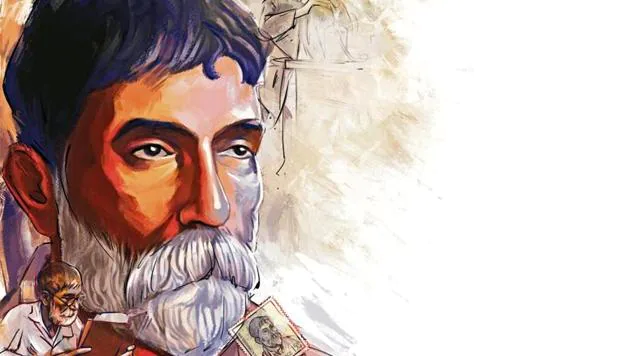Forgotten revolutionaries: Acharya Prafulla Chandra Ray


On 2 & 3 August, The Department of Chemistry in Delhi along with the Ministry of Culture hosted the curtain-raiser for a two-day international conference commemorating Acharya Prafulla Chandra Ray’s contributions as a freedom fighter and in chemistry. The Conference was organized on the 161st anniversary of Acharya Prafulla Chandra Ray’s birth under the auspices of Azadi Ka Amrit Mahotsav.
Prafulla Chandra Ray (1861–1944), a well-known Indian scientist and educator who is referred to as the “Father of Indian Chemistry,” was one of the country’s earliest “modern” chemical researchers. Prafulla Chandra Ray was born on August 2, 1861, in the Bangladeshi village of Raruli-Katipara. His father, Harish Chandra Ray, was a landowner who cherished knowledge and accumulated a sizable library in his residence.
Prafulla developed a disease and its recovery took two years, but he was left permanently feeble with digestive problems and insomnia. He went to Albert School when he returned to Kolkata, and in 1879, after clearing the entrance exam, he started attending Metropolitan College (now Vidyasagar College). At the Presidency College, Prafulla also studied chemistry, which quickly became his favorite subject. He set up a lab at his house and started conducting experiments.
Prafulla was awarded a scholarship at Edinburgh University in the UK in 1882, and he graduated from that institution in 1885. He continued to work in Edinburgh and finished his dissertation on “Conjugated Sulphates of the Copper-Magnesium Group: A Study of Isomorphous Mixtures and Molecular Combinations,” which earned him a D. Sc. and the “Hope Prize” in 1887.
In 1889, Prafulla Ray joined the Presidency College in Calcutta as an assistant professor of chemistry after moving back to the city in 1888. He set up a research facility and gradually amassed a team of motivated students who conducted research with him.
In the course of his career, he released almost 150 research publications. Numerous of his scientific publications were included in well-known periodicals of the day. In 1896, while doing research on nitrite and hyponitrite compounds and related derivatives, he made the stable chemical mercurous nitrite.
Additionally, he studied homomorphism, fluorination, double salt, and sulfur-containing organic compounds. He started Bengal Chemical Works in 1892 with just 700 Indian rupees. Under his leadership, it grew. Initially, the business manufactured herbal items and traditional treatments.
Bengal Chemical and Pharmaceutical Works Ltd. (BCPW), India’s first pharmaceutical corporation, was formed in 1901. The business gradually grew and emerged as a major manufacturer of chemicals and pharmaceuticals.
Due to his interest in ancient writings, Prafulla Ray published “The History of Hindu Chemistry” in two volumes in 1902 and 1908 after conducting extensive research. The book described the in-depth understanding of medicine and metallurgy in ancient India. At international conferences and seminars, he represented a number of Indian universities. In 1920, he was chosen to lead the Indian Science Congress.
His two-volume autobiography, “Life and Experiences of a Bengali Chemist,” which was released in 1932 and 1935, details his own goals as a scientist as well as the profound changes that India was going through at the time.
Prafulla Ray aimed to help the masses by utilizing the wonders of science. He was an eager and active participant in the early 1920s Bengal flood and famine relief efforts since he was such a passionate and dedicated social worker. In addition to establishing numerous other companies like the Bengal Enamel Works, National Tannery Works, and the Calcutta Pottery Works, he encouraged the use of khadi. Up until his death, he steadfastly continued this task of societal transformation.
Prafulla Ray, who lived a bachelor’s life, retired at the age of 75 to become a professor emeritus. Age 82, he passed away on June 16, 1944.
DISCLAIMER: The author is solely responsible for the views expressed in this article. The author carries the responsibility for citing and/or licensing of images utilized within the text.
